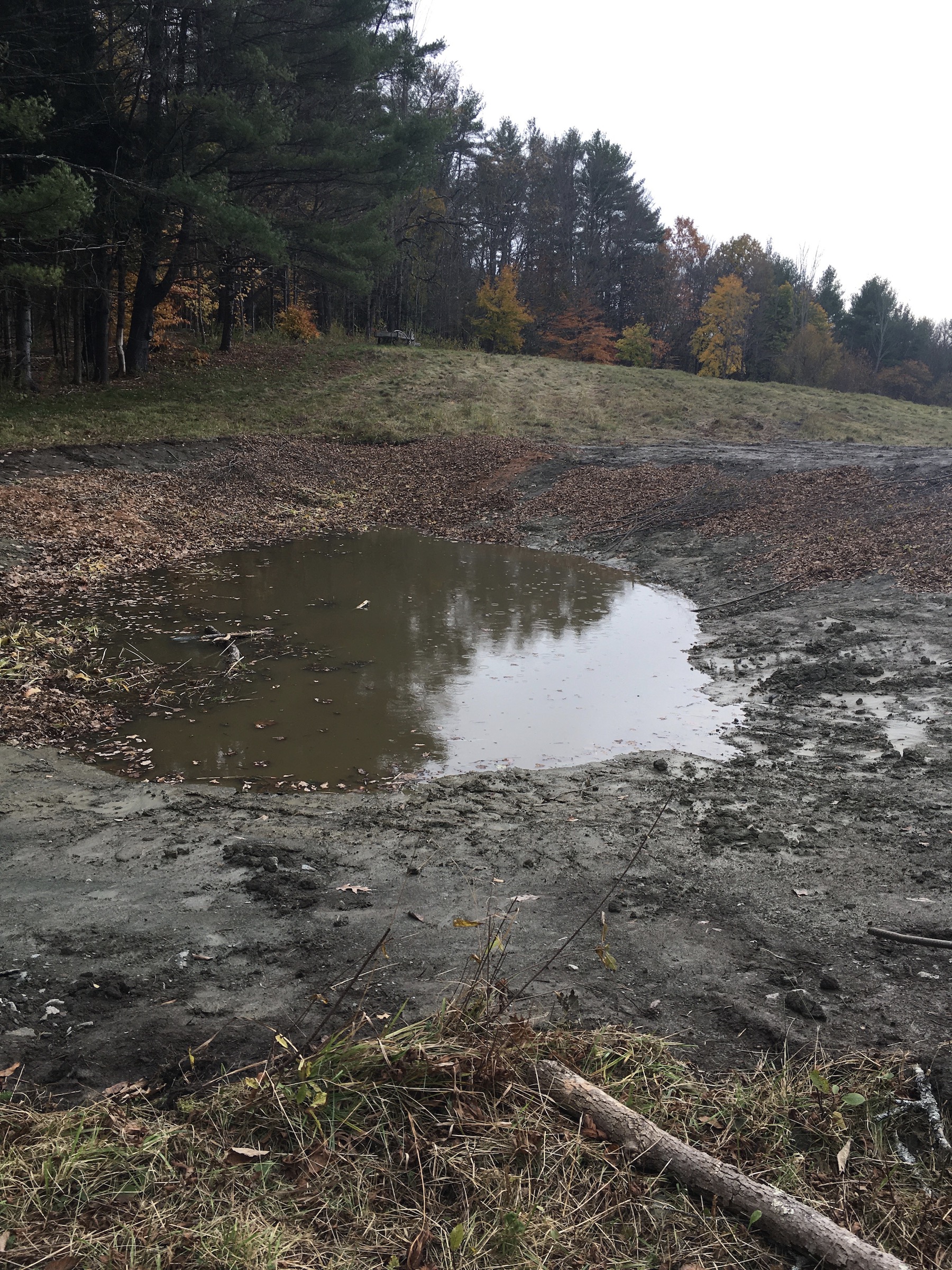Milt Frye Nature Area’s Vernal Pool
Published Mar 1st, 2022 by Lynnwood Andrews

In the upper corner of the field at the Milt Frye Nature Area (MFNA), water collects in a newly constructed vernal pool. It will take years of habitat improvement and monitoring to see if mole salamanders and wood frogs can establish self-sustaining populations. These amphibians depend on vernal pools for survival, while others, such as toads, and newts, use vernal pools, but not exclusively. Worldwide, amphibians are declining. Two mole salamanders are considered at risk of extinction in Vermont – the Jefferson and Blue-spotted salamanders. Protecting naturally occurring vernal pools is a very high conservation priority, as habitat destruction, inadequate legal buffer zone protection and climate change threaten them. Man-made pools have a checkered history of success because creating the proper water cycles and life zones within and surrounding them is very difficult.
Water Cycle
By definition, a vernal pool is a temporary body of water that has no permanent stream into or out of it. It typically dries up by mid to late summer. This period of dryness reduces predators, such as fish, newts, and some frog species that not only relish wood frog and mole salamander eggs, but also, exposes them to disease. Water collects naturally in the area chosen for the MFNA pool. How much water collects, how quickly it dries up and how warm it gets will determine if any additional changes need to be made in the basic pool configuration.
Life Zones

Wood frogs and mole salamanders, spend only a portion of their lives in vernal pools. They live near and typically return to their natal pools for reproduction, so the surrounding habitat within which they roam, or life zone, is equally important to their survival. Wood frogs can travel up to a half mile from the pool, and mole salamander species live within an eighth of a mile to a mile, though research suggests that a minimum of 600 feet from a pool needs to be strictly protected. Where buffer zones exist, current requirements generally range from only 50 to 100 feet. Vernal pool amphibians require undisturbed, shady, moist woods with plenty of plant debris (large logs, sticks, leaves) and places where they can hide such as rodent tunnels, rotted logs, moss and rock crevices. Roads, soil compaction, logging, invasives, removal of plant debris, and placement of weed barriers significantly degrade the habitat around vernal pools. Human traffic, even pedestrians and bicycles, significantly compact soil near vernal pools. Visitors to the MFNA can help by staying on marked and maintained paths, avoiding walking up to and around the pool, and keeping children and dogs from going into the pool. Ongoing habitat improvements will include planting native trees and shrubs to eventually shade the pool and improve the canopy cover and understory in the nearby woods. Volunteers will continue to remove invasives and add to woody debris and leaves already spread in the pool to improve the organic material in the pool and provide shelter. Wildlife-friendly mowing and increasing plant diversity will improve the field as habitat for shrews, voles, and mice. Salamanders live in small mammal tunnels after leaving the vernal pools.
Monitoring
The Norwich Conservation Commission and area students will establish a monitoring program to evaluate the ongoing habitat improvements, and the presence of key species and invasives/predators. Important monitoring variables include water depth, water temperature and quality, plant inventories, and wildlife inventories.
Acknowledgments
The Norwich Conservation Commission gratefully acknowledges the volunteer and financial support from Webster and Donovan Excavating, James Lamontagne Landscape Co. and the Norwich Women’s Club.
Originally published in Winter and Spring 2022 Norwich Times